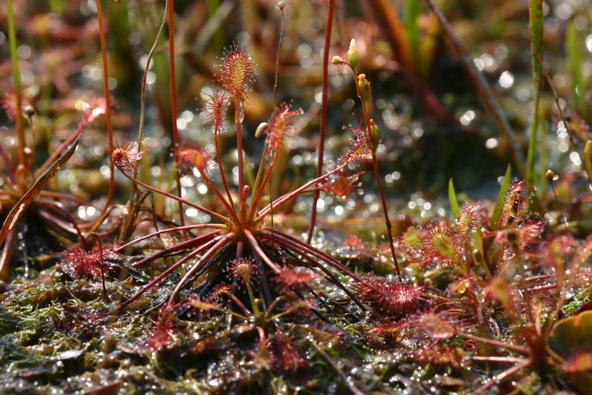Always interesting!
Gardeners love a wide range of plants; often species that are exotic, colourful and bright.
But a number of them are pretty invasive and “weedy.” We all know weeds – they grow where we don’t want them to grow.
Invasive species have often a larger impact on our planet, our natural gardens, forests, ecosystems and alpine vegetation. It all comes down to interfering with our native systems, pushing out our native critters, plants, and landscapes.
They change our Native systems to Exotic systems – Nice curricular exercise for schools: definitions of Native, Endemic, Exotic, Introduced, etc etc
Examples:
Darwin’s Barberry
One of the dirty dozen weeds (a Maggie Barry project when she was Minister for Conservation). Prickles and impossible for humans to get through. Seeds like an idiot and takes over native forests; hard to control and nobody benefits from flowers/nectar, apart from some pollinators. You can see why New Zealand Gardeners like the look of them!

Moth catching plant: Araujia
An exotic climber that smothers our native trees and shrubs. A pain in the butt in areas where we are trying to restore native vegetation. The seed pods have zillions of fluffy seeds in them that are dispersed on the wind in all directions. The stems and pods ooze a white, toxic sap (the same stuff that comes out of swan plants!) which allows Monarch Butterfly caterpillars to eat the plant. Some monarch aficionados use that horrid vine as “spare food.”
But there’s a real weird behaviour to these plants: the white flowers attract these insects with their nectar, and as the butterfly sticks its tongue into the flower it gets trapped. This is followed by distressed movements and flapping of the wings, which pollinates the flower;
The butterfly eventually dies, stuck on the flower…

A monarch butterfly stuck in Araujia.
Please get rid of these horrible exotic climbers – they don’t belong here; they are exotic pests!
There are many plant species that catch insects to get some food: Sundews (alpine areas and around wetlands) love to get flies with their sticky leaves – it provides them with Nitrogen and proteins.
Venus flytraps also eat bugs… Kids love to observe them and hope a fly will land on the trigger hairs. I have no problem with technologies like that – that’s ecological life, especially in Aotearoa!
Parapara plant
Here we have a native species that is not terribly common; it occurs in Northern habitats, especially off-shore islands and coastal forests. It looks really lovely with large, almost tropical leaves.
Native to NZ and some other areas in the Pacific.
Small white flowers and copious amounts of long, sticky seed pods. And with sticky I mean super-glue! It holds insects small and large as well as small birds: silvereyes, grey warbler, fantails and even ruru (all going for the stuck insects, of course).
This is New Zealand’s method of “Seed Dispersal.”
The trapped bird often succumbs to this sticky situation, and falls down on the ground with seeds attached; the seeds use the decaying bird body as their first meal of fertiliser to germinate and grow up.
One of the reasons the Parapara plant is becoming “rare-ish” is because some folk believe that this plant is evil and therefore pull it out… (and many folk believe it is not a Native – well… it is!!).
If you want to save your birds in the garden: take the seeds off before they develop their sticky skin.
If you find birds that are stuck: don’t pull them off the seeds, but take them, branch and all, to a Bird Rescue place or a vet near you – they have the gear and correct shampoos to give those birds a chance to survive!
And please make a donation to the wonderful work they do.
More information can be found on the BirdCare Aotearoa website.
Take your Radio, Podcasts and Music with you










